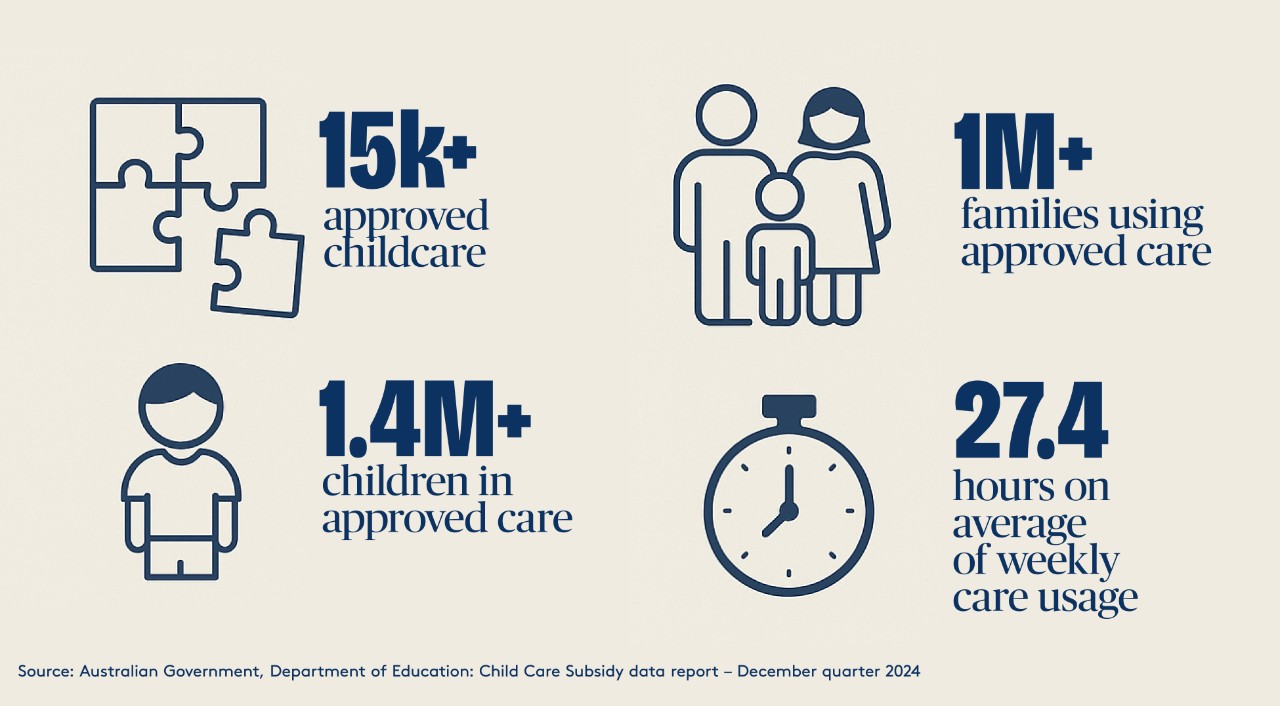Reports of systemic failures and a flawed regulatory system in Australia’s $20b childcare sector prompted calls for an inquiry to scrutinise the NSW regulator. However, experts say non-executive directors at childcare centres across Australia should immediately reassess the organisational structure and incentives in place.
Australia's $20 billion childcare sector is facing systemic failures and a flawed regulatory system, prompting urgent calls for reform. Experts assert that non-executive directors at childcare centres must critically reassess whether their organisational structures and incentives are truly prioritising children's wellbeing.
An ABC documentary that aired in March featured distraught parents and whistleblowers detailing a litany of alleged abuses and profiteering at childcare centres in Australia.
This included toddlers allegedly being left in highchairs for up to six hours at a time, being force-fed, pinched and thrown to the ground. Sexual abuse was also alleged.
The television investigation prompted the NSW Upper House Committee to unanimously call for an inquiry to scrutinise the performance of the state regulator.
No child should be at risk
“No child should be at risk while in early education or childcare,” says Samantha Page, CEO of not-for-profit advocacy group, Early Childhood Australia (ECA).
However, she believes there are a relatively small number of providers who are putting profit ahead of child safety and wellbeing.
For childcare organisations that are not-for-profit, there are resources available that can help to provide information and guidance on good governance practices.
The Australian Institute of Company Directors (AICD) has updated its guidance for the not-for-profit sector, to reflect the demands of the changing governance environment.
The revised edition of the Not-for-Profit Governance Principles (Principles) reflects changes that have occurred in the sector since they were first released, more than a decade ago in 2013, and revised in 2019.
The original 10 principles have been consolidated into eight, and include new principles on sustainability and organisational culture. There is a short resource on how to elevate the client voice into board decision making.
The Principles feature a governance checklist for smaller NFPs and real-life case studies from senior directors.
Read more here.
“Having said that, it doesn’t matter that it’s only a small proportion, it’s still unacceptable,” she says. “We need leaders in the sector to step up and say, ‘We’re not going to allow this to happen to any child.’”
Profits-first is problematic
Wendy McCarthy AO FAICD is the chair of advocacy group The Parenthood. She has been advocating for children’s rights for more than 50 years. McCarthy believes that when profits are prioritised over outcomes for children, the results are often disastrous.
McCarthy was on the board of not-for-profit public company Goodstart when it purchased more than 600 centres from the failed childcare provider ABC Learning.
Before its collapse in 2008, ABC Learning was the world's biggest publicly listed childcare operator, with 3000 centres globally and a market capitalisation of $2.5b.
Raising standards
“It was a model where all the centres were identical and the children weren’t at the centre of it,” says McCarthy. “We spent a decade getting those standards up across the board. Those of us on the board of Goodstart really believed you could raise standards, provide decent food and supervision, and still make a profit. When we made a profit, we reinvested it into the centre.”
One of the major criticisms of Australia’s rapidly growing childcare sector is that it is dominated by for-profit operators. Data from The Australian Children’s Education & Care Quality Authority (ACECQA), Australia’s childcare regulator, consistently shows for-profit childcare services are rated as lower quality than not-for-profit services.
Of those rated by regulators (11 per cent have never been rated), 11 per cent of for-profit, long daycare centres are not meeting national minimum quality standards, compared with four per cent of private not-for-profit centres. Similarly, 14 per cent of for-profit centres exceed the standards, compared to 23 per cent of not-for-profit services.

Spending on staffing
In 2023, the Australian Competition and Consumer Commission (ACCC) found large for-profit providers spend significantly less on staffing than not-for-profit providers.
Despite this, the federal government continues to support for-profit services through childcare subsidies.
Page agrees that not-for-profits tend to be better-performing when marked against the quality framework. However, she points out there are also many excellent for-profit providers.
Page does not endorse shifting the whole sector to public delivery. “It would be a difficult thing for the government to do because of the amount of capital that’s owned and delivered by providers. I would rather focus on how to improve the sector so it focuses on the best interests of children.”
In its Childcare inquiry final report, December 2023, the ACCC found that childcare providers — both for-profit and not-for-profit providers — in childcare markets under current regulatory settings were not delivering on the key objectives of accessibility and affordability.
It found for example that:
Households with low incomes spend relatively more of their disposable income on out-of-pocket childcare expenses compared with other households.
There tends to be a lower proportion of children from lower socio-economic advantaged areas enrolled in some form of childcare.
There is a lower supply of childcare services in remote and very remote areas.
First Nations children are less likely to be enrolled in childcare and their households face additional barriers to accessing formal childcare — reflecting both practical and cultural and historical factors.
Family day care shows clear signs of contraction, which disproportionately affects culturally and linguistically diverse households, who often seek culturally inclusive childcare.
Prices for in-home care services, used by children and households for whom other forms of care are not suitable, have increased substantially in recent years, while at the same time the number of in-home care services has fallen by half.
Change the model
However, she questions whether it is appropriate for childcare centres to be run on a for-profit distribution basis. This is unlike private schools, which have not-for-profit company structures. Private schools do not have shareholders and profits must be reinvested into the school.
“Why are we comfortable with early childhood services being run on a distribution of profit basis, and especially when the government is increasingly the major funding body? With the government subsidy now covering up to 90 per cent of the cost for most families, it is becoming very similar to school funding models. Is it correct to have this profit distribution back to shareholders or equity partners? Or should we be changing that model? I think we can continue to have that dialogue without demonising the private sector.”
Reassess incentives
Directors on the boards of for-profit childcare centres must reassess the incentives currently in place. For example, incentivising minimum spend on workforce by operating with minimum staff numbers and the lowest-paid workers is highly problematic as it leads to stress and overwhelm among staff and neglect for children.
“The single biggest thing for quality in early childhood education and care is the professional capability of the team,” says Page. “Is the centre investing in professional learning? Has it got workforce stability? If they don’t have those things, I would be questioning how they can possibly be delivering on quality.
“I am not saying leaders in the business are sitting back thinking, ‘How do we put children at risk?’ They’re thinking about being able to do exciting things with a return on investment, such as buying more centres and rewarding staff,” says Page.
“They’re doing it for what seems like logical reasons, but they’ve lost what impact that has on quality. It’s easy for any business to set the wrong incentives and go astray.”
McCarthy urges board members to take a step back and examine any unintended consequences from the incentives in place. The benchmark must always be whether the childcare provider is prioritising children’s wellbeing.
“Performance indicators should be about the stability and competency of the team, reported satisfaction from families, and demonstrated development of learning outcomes for children,” she says. “It should not be about return on investment and the kind of metrics that drive poor quality practices.”
Practice resources — supporting good governance
AICD’s contemporary aged care governance practice resources for members:
- Governing for Quality Aged Care – A Director’s Guide
- Care Governance Course: Achieving Quality Outcomes
- Care Governance Webinar Series
- Not-for-Profit Governance and Performance Study 2024-25
Latest news
Already a member?
Login to view this content



.jpg)